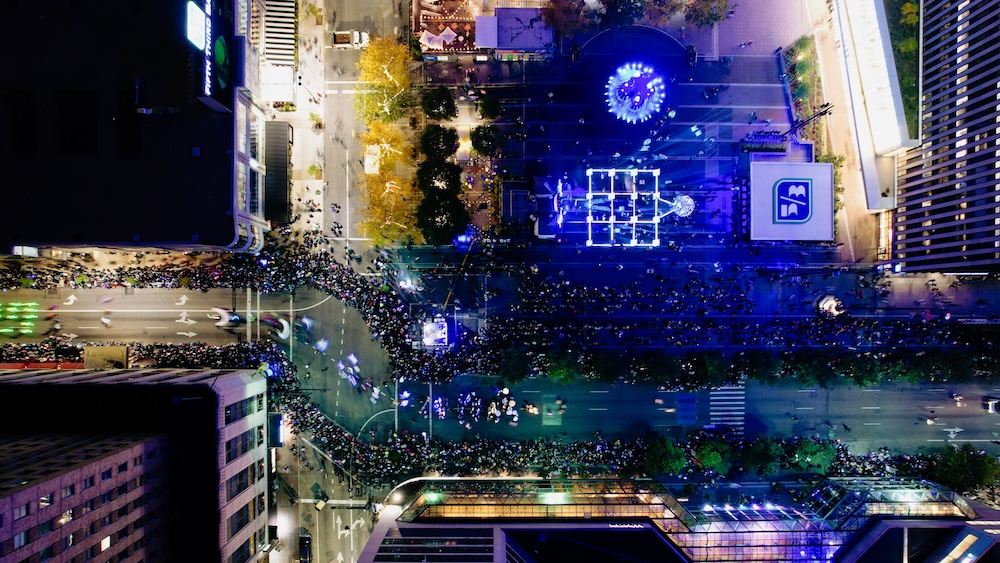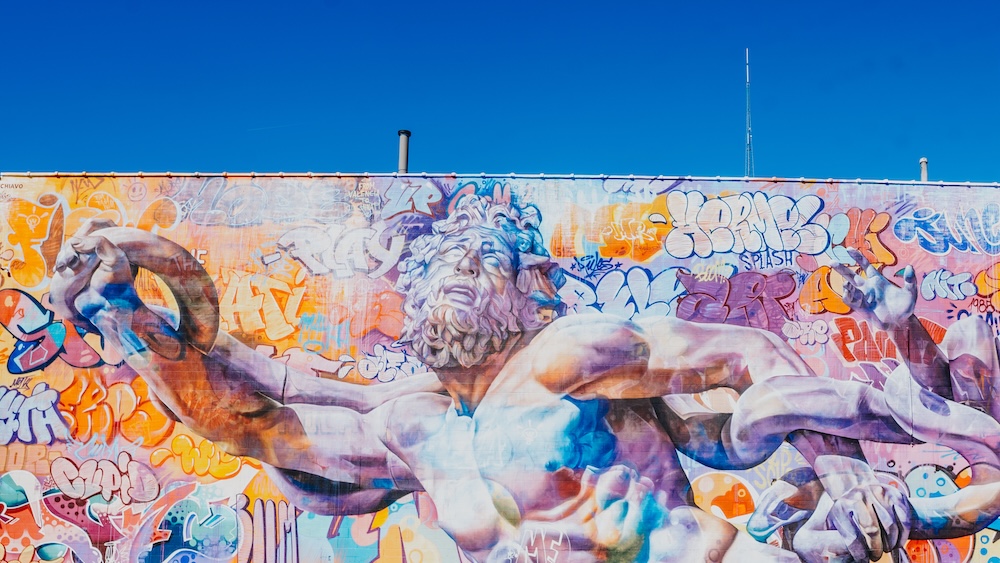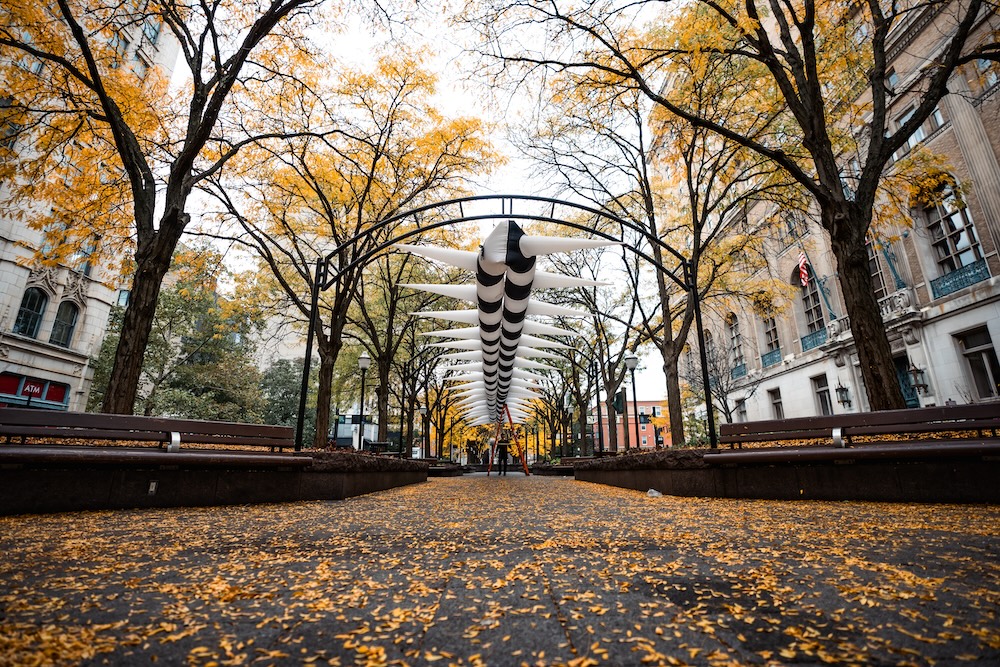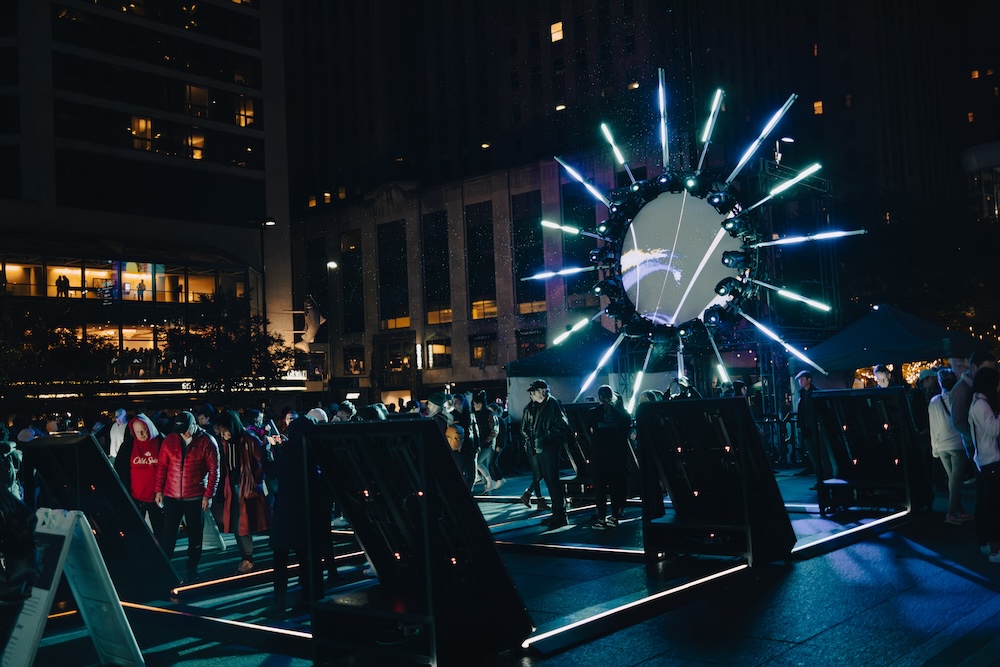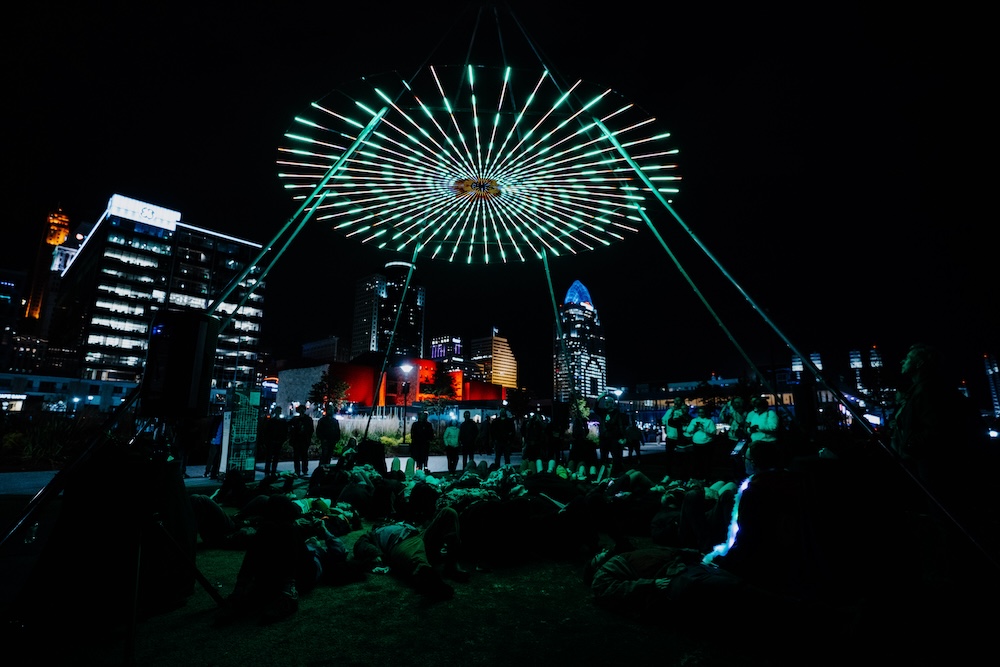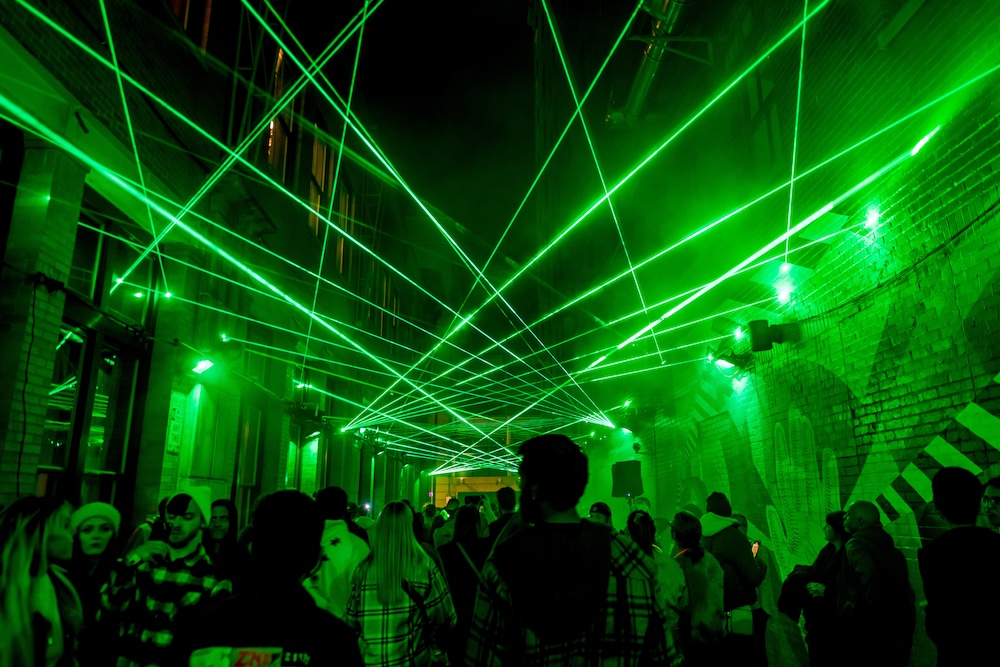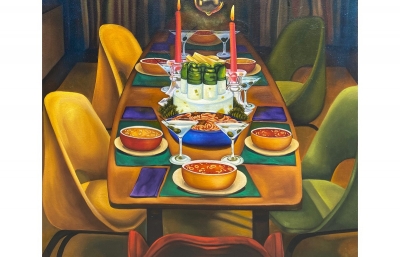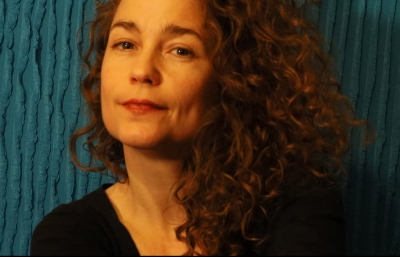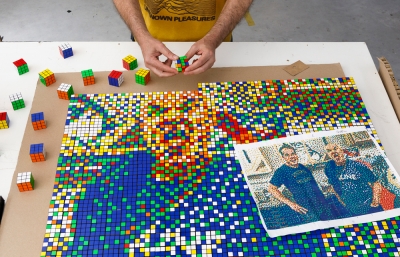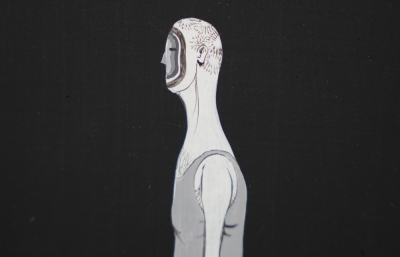No doubt, there are a lot of mural festivals; in fact, too many, if you ask me. When the senior center starts taking field trips to see cool new graffiti on the walls of your town’s “old town,” the coolness factor of the mural festival has lost much of its… coolness. With the idea generally being to shine a light on your city via large scale art, once a few dozen walls are covered, what’s really left to do? Enter Blink Cincinnati. Instead of taking over a neighborhood and painting some Instagrammable photo-op backdrops, they decided that 40 continuous blocks and a city-wide visual, experiential showcase spanning two states well into the night is the way to make a statement. I had the opportunity to catch up with Andrew Salzbrun, co-founder of Blink, and Justin Brookhart, executive director of the festival, to chat about what has been and what is meant to be as we inch closer to Blink 2024 this October 17—20, 2024.
Mike Stalter: What are the origin stories of Blink? Why did you think this could be a success in Cincinnati?
Andrew Salzbrun: The reality of it was that this is what a future city does. The dirty little secret about Midwesterners, specifically Cincinnatians, is that we are very, very good at telling each other about what we used to be good at, not showing people where we want to go when we get older. We'll tell you how we lost a Super Bowl. We'll tell you how 25, 30 years ago, the Reds won the World Series, how we used to have steamships, but we can’t tell you what our hopes and dreams are. And that really set the tone for Blink as an expression of what we want the future of Cincinnati to look like.
So, going way back, 2012 or 2013, the Symphony Orchestra had scored a really renowned conductor to take over and they wanted to introduce him to Cincinnati in a really big way. We had just wrapped up an event as part of Cincinnati Fashion Week, and yes, at one point Cincinnati did have a fashion week. The executive director of the symphony saw that and asked if we could do something similar to introduce this new conductor. Fast forward a couple months, and we came up with this idea for what we called Lumenocity, which was the first time in the Midwest that architectural projection mapping had occurred. So we projection map the facade of our music hall in sync with a full scale, live symphony orchestra live. We ran for three nights of Luminosity as the unveiling of this new conductor, as the unveiling of our new Washington Park where the symphony played in front of the wall, and we mapped this 60 minute music hall production, and that was considered the tipping point of the renaissance of the Over the Rhine neighborhood, where it opened the floodgates to economic development in the city, and it was amazing. We destroyed the park as fast as we built it up and rehabbed it because 20,000 people a night came to the show and they were sitting in bushes and climbing trees that weren't meant to be climbed. There were no seats!
Unlike a lot of festivals where it’s an annual thing, Blink is every two years. Why is that?
Justin Brookhart: I think it's good from an excitement and an energy standpoint. If you're here and then you go away for a while and then come back and there is something to both the name Blink and the idea of this fleeting moment. So the financial realities of it, sure, and the fundraising are difficult, but if some donor were to come write us a check and just bankroll us for the next 10 years at Blink saying we could do this annually, I still don't know that we would.
What does a successful Blink 2024 look like from each of your perspectives?
AS: I think my answer probably changes every two years. Where I'm really hopeful, and I don't know if we'll get there this year, is that I think for certain that in 2026 success for me will be that people who don't live in the northern Kentucky, and greater Cincinnati region that are coming in for the festival versus our locals experiencing it. This truly is kind of a beacon for our community to show up on not only the Midwest stage or the national stage, but on the world stage now. And I think it’s hyper important that not only are we making ourselves available with a great show to those audiences, but that we stress being good hosts when we're here. We want our visitors to have a blast and to go back and sing the praises of what was a great weekend in Cincinnati.
So it's Blink illuminated by ArtsWave. Can you talk about your relationship with ArtsWave and the other things you have in place designed to engage local communities and artists in the festival around the city?
JB: ArtsWave is one of our key philanthropic underwriters, and they're essentially how the arts are funded in Cincinnati. Andrew and I mentioned how there's no arts tax or there's no city-based funding, so ArtsWave is that mechanism, essentially a workplace giving campaign, existing in various forms since, I believe, 1925, and they have been a key philanthropic funder and supporter of Blink since the beginning, so that designation is kind of like a title sponsorship for them.
Andrew mentioned the Haile Foundation. They're sort of our original philanthropic supporter and one of the founding partners in Blink and among several different foundations that support things. To answer your question about how we involve the local arts community, it's by directly curating and commissioning work from local artists and local organizations. We do an open call for artists across all of our major disciplines. There are mural applications, there's projection mapping and there's light-based installations, which is definitely the broadest category that we have. This year's call for artists was terribly successful just from a number standpoint. When we launched the call in 2022, we had a little bit over 250 applications, which was nice, and there was plenty of great art to curate from that. But just for comparison, when we launched our call for artists last fall, we had over 950 applications across all those disciplines apply.
For someone who lives and loves their city, from your perspective, what's the blueprint for doing this?
AS: That's a great question. I think the biggest piece of advice would be if you want to do something of significant impact, it takes time, so give yourself a longer runway to do something truly special. If Justin and I got together and decided we wanted to do Blink for the first time, we could round up enough cash, find a couple buildings, projection map them for a weekend, and we'd have three or four sites. It could be neat, but it wouldn't be transformational. I feel like in the era of instant gratification that we live in, where the falsehoods that are shown on Instagram in terms of how fast things happen from render to reality, to really move the needle at this scale, takes significant upfront work with little to no reward for a long period of time, and you have to be patient to give yourself that runway.
JB: If you're thinking about something like this, think about how your city or region is special or unique. I think Cincinnati was ready as a region for this in 2017 because they wanted to celebrate something that was their own. They wanted to celebrate the urban core that was being revitalized. They wanted to celebrate all these local artists who were making things. Yes, you’ve got to raise your money, work with your city officials, you’ve got to do all the not so fun production logistics, but I think the hardest part is figuring out how you can make your version of this unique to where you're from.
Blink will take place from October 17 – 20, 2024 in Cincinnati, Ohio

